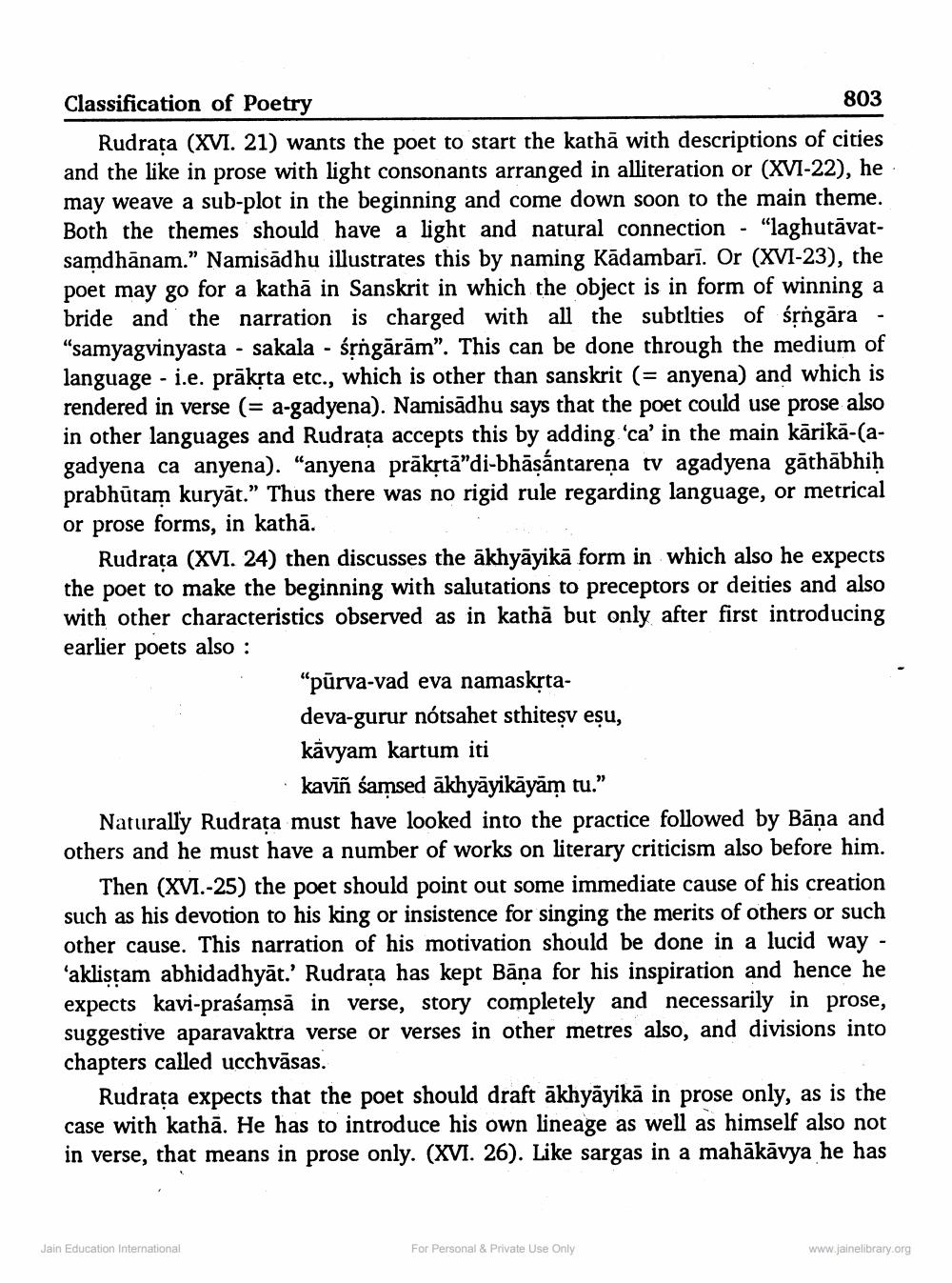________________
Classification of Poetry
803
Rudrata (XVI. 21) wants the poet to start the kathā with descriptions of cities and the like in prose with light consonants arranged in alliteration or (XVI-22), he may weave a sub-plot in the beginning and come down soon to the main theme. Both the themes should have a light and natural connection - "laghutāvatsamdhānam." Namisādhu illustrates this by naming Kādambarī. Or (XVI-23), the poet may go for a katha in Sanskrit in which the object is in form of winning a bride and the narration is charged with all the subtlties of śộngāra - "samyagvinyasta - Sakala - śrngārām”. This can be done through the medium of language - i.e. prāksta etc., which is other than sanskrit (= anyena) and which is rendered in verse (= a-gadyena). Namisādhu says that the poet could use prose also in other languages and Rudrața accepts this by adding 'ca' in the main kärikä-(agadyena ca anyena). "anyena prākstā"di-bhāşántarena tv agadyena gāthābhiḥ prabhūtam kuryāt.” Thus there was no rigid rule regarding language, or metrical or prose forms, in kathā.
Rudrata (XVI. 24) then discusses the ākhyāyikā form in which also he expects the poet to make the beginning with salutations to preceptors or deities and also with other characteristics observed as in kathā but only after first introducing earlier poets also :
"pūrva-vad eva namaskstadeva-gurur nótsahet sthiteși eșu, kávyam kartum iti
kavīñ samsed ākhyāyikāyām tu.” Naturally Rudrata must have looked into the practice followed by Bāna and others and he must have a number of works on literary criticism also before him.
Then (XVI.-25) the poet should point out some immediate cause of his creation such as his devotion to his king or insistence for singing the merits of others or such other cause. This narration of his motivation should be done in a lucid way - ‘aklistam abhidadhyāt.' Rudraça has kept Bāņa for his inspiration and hence he expects kavi-praśamsă in verse, story completely and necessarily in prose, suggestive aparavaktra verse or verses in other metres also, and divisions into chapters called ucchvāsas.
Rudrata expects that the poet should draft ākhyāyikā in prose only, as is the case with kathā. He has to introduce his own lineage as well as himself also not in verse, that means in prose only. (XVI. 26). Like sargas in a mahākāvya he has
Jain Education International
For Personal & Private Use Only
www.jainelibrary.org




